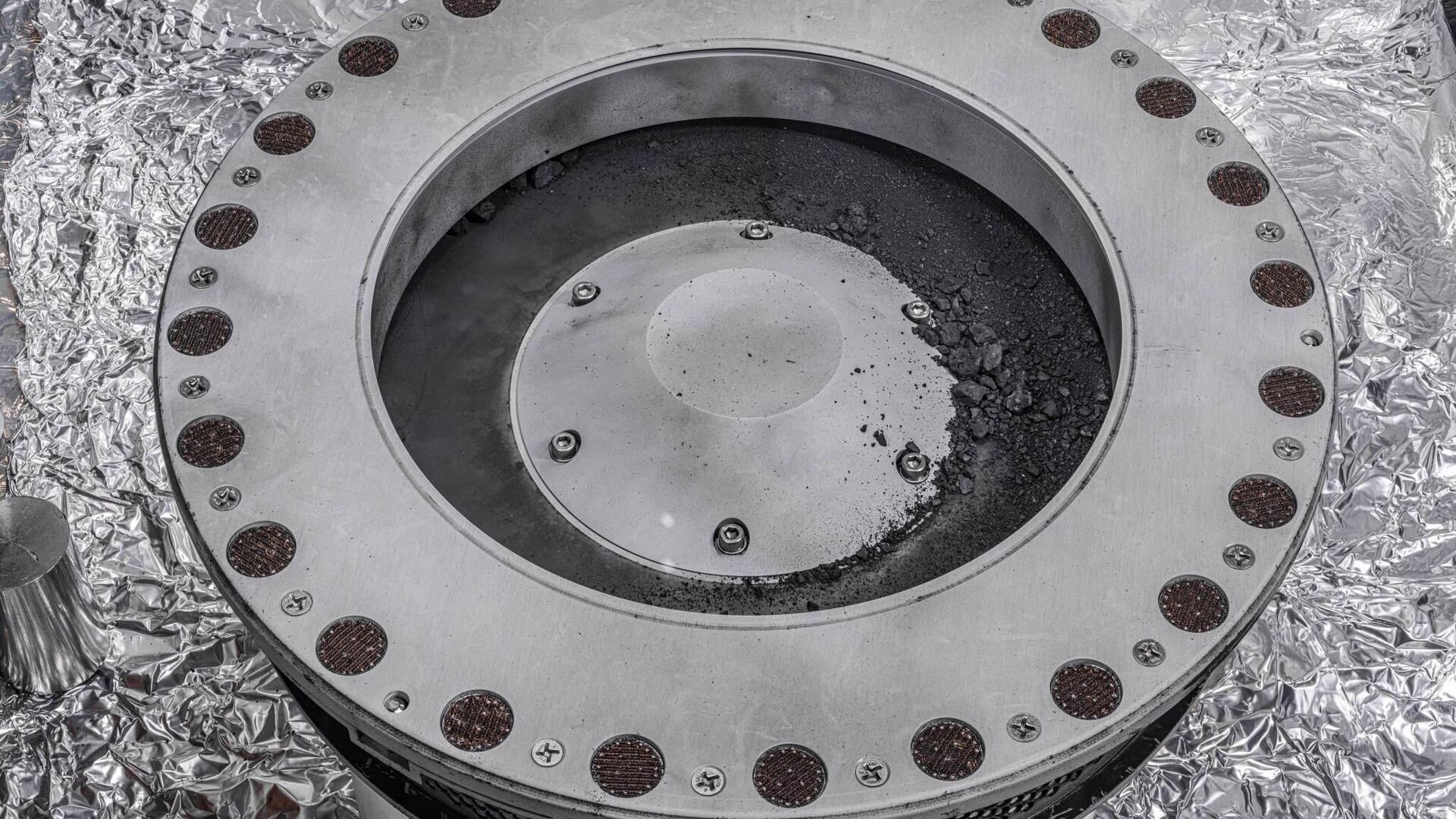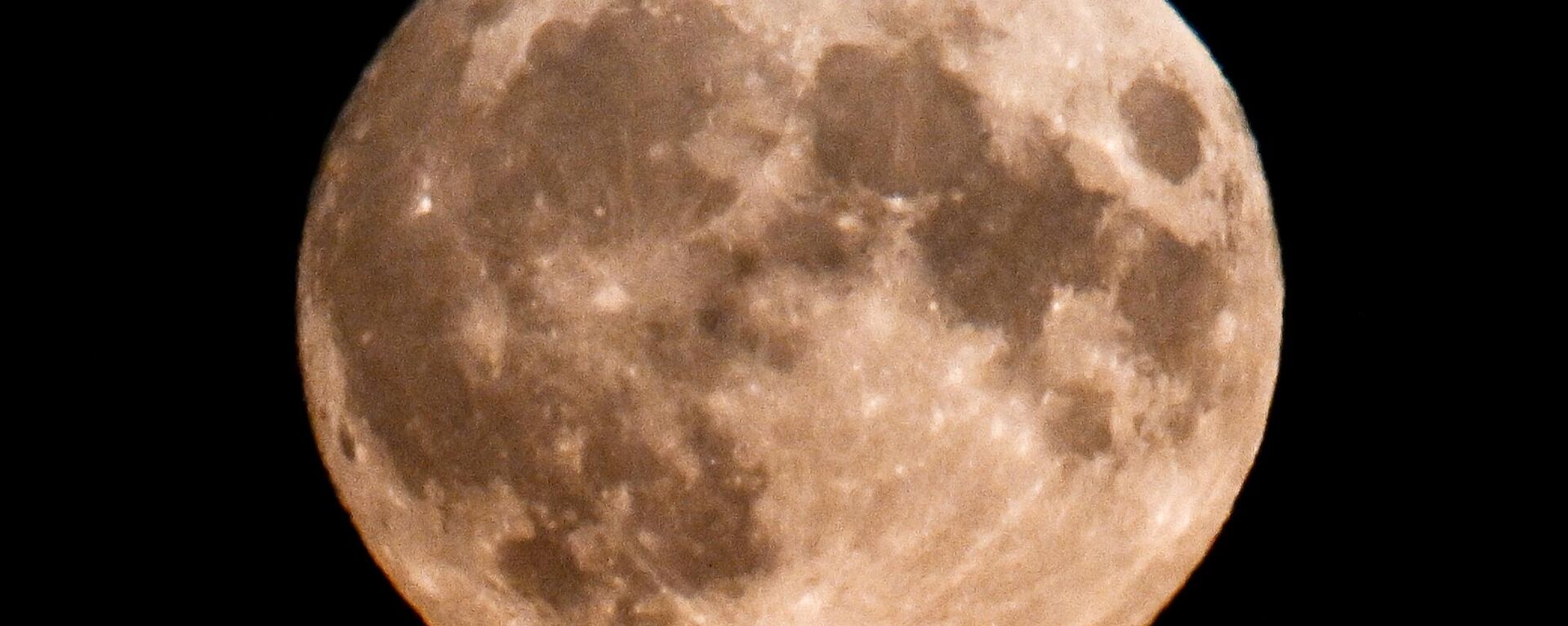https://en.sputniknews.africa/20231012/bennu-asteroid-sample-contains-basic-life-components-nasa--1062729897.html
Bennu Asteroid Sample Contains Basic Life Components: NASA
Bennu Asteroid Sample Contains Basic Life Components: NASA
Sputnik Africa
Bennu is an asteroid that is cosidered an antiquity of the Solar System. Last month, NASA received the samples of the 4.5 billion-year-old asteroid, collected... 12.10.2023, Sputnik Africa
2023-10-12T19:15+0200
2023-10-12T19:15+0200
2023-10-12T19:16+0200
nasa
international
space
space exploration
earth
science
carbon
https://cdn1.img.sputniknews.africa/img/07e7/0a/0c/1062729666_0:192:2048:1344_1920x0_80_0_0_c34816192ed7f49f75dd45b38d281552.jpg
The US National Aeronautics and Space Administration (NASA) announced on Wednesday that after the initial studies of the Bennu sample, they detected carbon and water in the asteroid. According to NASA Administrator Bill Nelson, the OSIRIS-REx sample is the largest carbon-rich asteroid sample ever returned to Earth. As a result, scientists will be able to study the origins of life on our own planet for generations to come.Osiris-Rex is an automated interplanetary station (AMS) designed to return soil samples from the asteroid Bennu to Earth. In 2016, the mission was launched; it landed on the asteroid on December 3, 2018.According to NASA, in order to understand how our solar system was formed and how the precursor materials to life may have been seeded on Earth, more work is needed to understand the nature of the carbon compounds found. However, the initial discovery bodes well for future analyses of the asteroid sample.The goal of the OSIRIS-REx sample collection was 60 grams of asteroid material, but the mission managed to collect additional material. The science team assured that for the next two years, it will continue to characterize the samples and perform the analysis needed to meet the mission's science goals .Previously, there were different expectations about bringing the samples to Earth. This was a major challenge because the container containing the Bennu particles was expected to heat up to 3,000° C due to air friction as the spacecraft entered the Earth's atmosphere.Bennu is believed to be one of the most dangerous rocks in outer space, as there is a small chance it could collide with Earth between the years 2175 and 2199. The asteroid is among those considered "building blocks for the planets" since they were around for billions of years and have preserved the materials that participated in the formation of the Earth.
https://en.sputniknews.africa/20230916/1062146897.html
space
earth
Sputnik Africa
feedback@sputniknews.com
+74956456601
MIA „Rossiya Segodnya“
2023
Samantha Arias
https://cdn1.img.sputniknews.africa/img/07e7/0a/18/1063050346_115:0:834:719_100x100_80_0_0_1682778780537fd5aa8dd2536a012c1b.jpg
Samantha Arias
https://cdn1.img.sputniknews.africa/img/07e7/0a/18/1063050346_115:0:834:719_100x100_80_0_0_1682778780537fd5aa8dd2536a012c1b.jpg
News
en_EN
Sputnik Africa
feedback@sputniknews.com
+74956456601
MIA „Rossiya Segodnya“
Sputnik Africa
feedback@sputniknews.com
+74956456601
MIA „Rossiya Segodnya“
Samantha Arias
https://cdn1.img.sputniknews.africa/img/07e7/0a/18/1063050346_115:0:834:719_100x100_80_0_0_1682778780537fd5aa8dd2536a012c1b.jpg
nasa, international, space, space exploration, earth, science, carbon
nasa, international, space, space exploration, earth, science, carbon
Bennu Asteroid Sample Contains Basic Life Components: NASA
19:15 12.10.2023 (Updated: 19:16 12.10.2023) Samantha Arias
Producer / Podcast host
Bennu is an asteroid that is cosidered an antiquity of the Solar System. Last month, NASA received the samples of the 4.5 billion-year-old asteroid, collected by the OSIRIS-REx mission, which came back to Earth on September 24 after a return trip of almost three years.
The US National Aeronautics and Space Administration (NASA) announced on Wednesday that after the initial studies of the
Bennu sample, they detected carbon and water in the asteroid.
"Initial studies of the 4.5-billion-year-old asteroid Bennu sample collected in space and brought to Earth by NASA show evidence of high-carbon content and water, which together could indicate the building blocks of life on Earth may be found in the rock," NASA informed.
According to NASA Administrator Bill Nelson, the OSIRIS-REx sample is the largest carbon-rich asteroid sample ever returned to Earth. As a result, scientists will be able to study the origins of life on our own planet for generations to come.
"Almost everything we do at NASA seeks to answer questions about who we are and where we come from. NASA missions like OSIRIS-REx will improve our understanding of asteroids that could threaten Earth while giving us a glimpse into what lies beyond. The sample has made it back to Earth, but there is still so much science to come – science like we’ve never seen before," the administrator added.
Osiris-Rex is an automated interplanetary station (AMS) designed to return soil samples from the asteroid Bennu to Earth. In 2016, the mission was launched; it landed on the asteroid on December 3, 2018.
According to
NASA, in order to understand how our solar system was formed and how the precursor materials to life may have been seeded on Earth, more work is needed to understand the nature of the carbon compounds found. However, the initial discovery bodes well for future analyses of the asteroid sample.
"As we peer into the ancient secrets preserved within the dust and rocks of asteroid Bennu, we are unlocking a time capsule that offers us profound insights into the origins of our solar system," said Dante Lauretta, OSIRIS-REx principal investigator.
The goal of the OSIRIS-REx sample collection was 60 grams of asteroid material, but the mission managed to collect additional material. The science team assured that for the next two years, it will continue to characterize the samples and perform the analysis needed to meet the mission's science goals .
Previously, there were different expectations about bringing the samples to Earth. This was a major challenge because the container containing the Bennu particles was expected to heat up to 3,000° C due to air friction as the spacecraft entered the Earth's atmosphere.
Bennu is believed to be one of the most dangerous rocks in outer space, as there is a small chance it could collide with Earth between the years 2175 and 2199. The asteroid is among those considered "building blocks for the planets" since they were around for billions of years and have preserved the materials that participated in the formation of the Earth.



